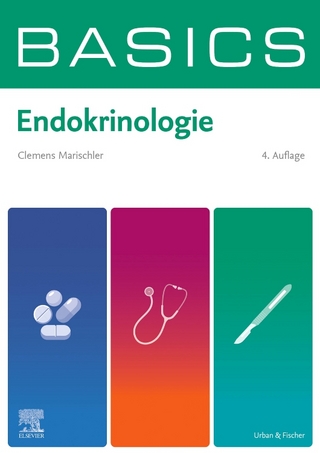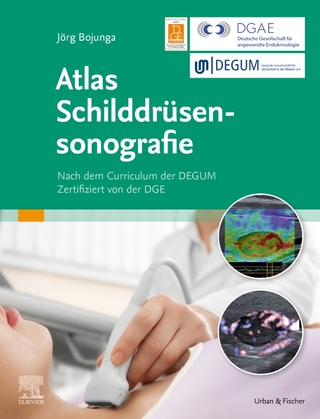
The Human Hypothalamus
Elsevier Science Publishing Co Inc (Verlag)
978-0-12-819975-6 (ISBN)
Dick Swaab (1944) earned his medical and doctoral degrees at the University of Amsterdam, where he became involved in brain research during his third year of medical school. He was Director of the Netherlands Institute for Brain Research from 1978 to 2005. Since 1979 he is Professor of Neurobiology at the Medical Faculty, University of Amsterdam. In 1985, Dr. Swaab founded the Netherlands Brain Bank (NBB) to serve as a source of clinically and neuropathologically well-documented research tissue. Since its founding, the Brain Bank has provided samples from more than 4,000 autopsies to 500 research groups in 25 countries. He was director of the NBB until 2005. He is Leader Research team Neuropsychiatric Disorders, Neth. Inst for Neuroscience, an institute of the Royal Netherlands Academy of Arts and Sciences (KNAW). Swaab is also appointed for 2011-2017 Chao Kuang Piu Chair of Zhejiang University, Hangzhou, P.R. China. His major research interests focus on, sexual differentiation of the human brain in relation to gender identity and sexual orientation, aging of the brain, Alzheimer’s disease, the neurobiological basis of depression, suicide and eating disorders. He has published over 540 papers in SCI journals, authored more than 200 chapters in books, and edited more than 60 books. Swaab mentored 84 PhD students from which 16 are now full professor. He is “Companion in the Order of the Dutch Lion, bestowed by her Royal Majesty Queen Beatrix of the Netherlands. In 2008 Swaab obtained the Academy medal for his role in national and international neuroscience. Dick Swaab is author of the 2 volume monograph The Human Hypothalamus that appeared in the Handbook of Clinical Neurology series, Elsevier, Amsterdam (1000 pp) and the Dutch best seller We are our Brains (450.000 copies sold), that is translated in 14 languages. A children's version of the book (You are your brains) has also appeared in Dutch in 2013 and Russian (2014). Swaab's H-factor is 76. Felix Kreier is a pediatrician and affiliated with OLVG Hospitals in Amsterdam, The Netherlands. Paul J. Lucassen did his PhD in 1995 on Alzheimer’s Disease at the Netherlands Institute for Brain Research in Amsterdam. After a.o. a postdoc in Leiden, he became Full Professor of Brain Plasticity in 2011 at the Swammerdam Institute for Life Sciences (SILS) of the University of Amsterdam, The Netherlands. His group studies molecular, nutritional, pharmacological and environmental regulation of brain plasticity. They combine molecular tools, in vitro/vivo model systems, human brain tissue, cohort studies and brain imaging. A major focus is on adult neurogenesis and cognition in relation to; (early life) stress, exercise, enrichment, depression, brain insults and dementia. Ahmad Salehi is affiliated with Stanford Medical School, Department of Psychiatry & Behavioral Sciences, in Palo Alto, CA, United States. Dr. Ruud M. Buijs is head of the Physiology department of the I.I.Biomedicas at the UNAM university and leader of the group Hypothalamic Integration Mechanisms. In that group, the scientists study how the brain and body interact with each other, and hereby the attention is focussed on autonomic and hormonal regulation of body functions under the influence of the biological clock of the brain.
SECTION 1 Introduction
1. Introduction: The anterior hypothalamus
2. History of hypothalamic research: “The spring of primitive existence
3. Anatomy and cytoarchitectonics of the human hypothalamus
4. Morphology and distribution of hypothalamic peptidergic systems
5. MRI maps, segregation, and white matter connectivity of the human hypothalamus in health
6. Magnetic resonance imaging of the hypothalamo–pituitary region
7. Resting-state functional connectivity of the human hypothalamus
8. Neurogenesis in the adult hypothalamus: A distinct form of structural plasticity involved in metabolic and circadian regulation, with potential relevance for human pathophysiology
9. Matching of the postmortem hypothalamus from patients and controls
SECTION 2 The basal forebrain cholinergic system
10. Spatial topography of the basal forebrain cholinergic projections: Organization and vulnerability to degeneration
11. The diagonal band of Broca in health and disease
12. Nucleus basalis of Meynert degeneration predicts cognitive impairment in Parkinson's disease
13. Enlargement of early endosomes and traffic jam in basal forebrain cholinergic neurons in Alzheimer's disease
14. Gene and cell therapy for the nucleus basalis of Meynert with NGF in Alzheimer's disease
SECTION 3 The circadian system
15. The circadian system: From clocks to physiology
16. Development of the circadian system and relevance of periodic signals for neonatal development
17. Disrupted circadian rhythms and mental health
18. Diurnal and seasonal molecular rhythms in the human brain and their relation to Alzheimer disease
19. Circadian changes in Alzheimer's disease: Neurobiology, clinical problems, and therapeutic opportunities
20. The circadian system in Parkinson's disease, multiple system atrophy, and progressive supranuclear palsy
21. Retina and melanopsin neurons
22. Melatonin and the circadian system: Keys for health with a focus on sleep
23. Melatonin receptors, brain functions, and therapies
24. Chronotherapy
25. The use of melatonin to mitigate the adverse metabolic side effects of antipsychotics
SECTION 4 Bed nucleus of the stria terminalis and the fear circuit
26. Chemoarchitecture of the bed nucleus of the stria terminalis: Neurophenotypic diversity and function
27. Functional anatomy of the bed nucleus of the stria terminalis–hypothalamus neural circuitry: Implications for valence surveillance, addiction, feeding, and social behaviors
28. Roles of the bed nucleus of the stria terminalis and amygdala in fear reactions
SECTION 5 Preoptic area
29. The median preoptic nucleus: A major regulator of fluid, temperature, sleep, and cardiovascular homeostasis
30. The neuroendocrinology of the preoptic area in menopause: Symptoms and therapeutic strategies
31. The intermediate nucleus in humans: Cytoarchitecture, chemoarchitecture, and relation to sleep, sex, and Alzheimer disease
| Erscheinungsdatum | 31.08.2021 |
|---|---|
| Reihe/Serie | Handbook of Clinical Neurology |
| Sprache | englisch |
| Maße | 192 x 262 mm |
| Gewicht | 1440 g |
| Themenwelt | Medizinische Fachgebiete ► Innere Medizin ► Endokrinologie |
| Medizin / Pharmazie ► Medizinische Fachgebiete ► Neurologie | |
| Naturwissenschaften ► Biologie ► Humanbiologie | |
| Naturwissenschaften ► Biologie ► Zoologie | |
| ISBN-10 | 0-12-819975-X / 012819975X |
| ISBN-13 | 978-0-12-819975-6 / 9780128199756 |
| Zustand | Neuware |
| Haben Sie eine Frage zum Produkt? |
aus dem Bereich


